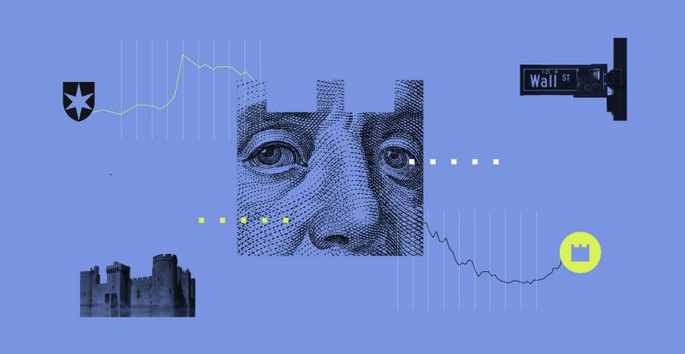
Let’s learn about the fund a little bit through our short interview with the winner.
How was the portfolio positioned to navigate the market volatility in 2022?
2022 was a tough year for most markets but ASEAN markets were able to withstand the global equity sell off to certain extent. ASEAN markets were much more resilient than other markets because ASEAN only started to benefit from reopening in 2022. At the start of the year, foreign exchange reserves were near all-time high and foreign ownership in equities were near all-time low.
Prior to 2022, we positioned the portfolio in anticipation of aggressive FED rate hikes as we viewed that the FED was behind the curve and that inflation was not transitory. The portfolio was overweight in banks and insurance which benefited from the rising interest rates. Singapore banks were the biggest weighting as they have the highest transmission rate from US policy rates to net interest margin.
Our portfolio had an overweight in Indonesia early in the year as the macro picture turned more positive and we believed that Indonesia is one of the biggest beneficiaries of fund outflow from China. Export was strong driven by coal after Russia invaded Ukraine and cut off natural gas supply. Nickle ore export ban, an initiative by the Jokowi Administration has driven Chinese steel manufacturers to set up plants in Indonesia to process nickel ore and export stainless steel back to China which boosted Indonesia’s export and FDI which help stabilized the IDR. Current account turned positive from being structurally negative.
In the second half of 2022, we tactically trimmed Indonesia on concerns about reversal of fund flows to China, market strong outperformance, and the possibility of coal price correction. We also reduced our overweight position in SG banks to neutral as we believe its 2-year outperformance has run its course. We rotated into the Philippines which was the worst performer in ASEAN. We believed that high inflation and 3.5% interest rate hike was already priced into the markets. We built positions in Philippine banks as asset quality was good and earnings and net interest margin expanded significantly.
What are the factors that make this fund distinct from other ASEAN equity funds?
The fund uses a combination of top-down and bottom-up stock selection approach. The Portfolio manager makes macro decision, identifies thematic trends, and makes country weighting allocation. The analysts perform in-depth research and assist with stock selection.
The fund focuses on investing in good quality companies with strong fundamentals and takes a long-term investment approach. This enables the fund to hold position through volatile periods. This help explains the lower volatility and a lower maximum draw down than most ASEAN equity funds.
The fund takes large active position and does not try to minimize tracking error. The fund makes active country allocation weighting going over and under by as much as 10% against the benchmark. The fund manages cash position actively holding when staying defensive which has helped with downside protection. The portfolio manager has been managing the fund since inception in 2018 which ensures the continuity of investment style.
What is your view on the interest rate trend and inflation rate and how would that impact fund’s performance?
Our view is that the interest rate trend is close to peaking but will be delayed by strong job data and sticky inflation. Inflation will gradually trend down but we believe it will be a slow process.
ASEAN markets faced tough headwinds in 2022 with many central banks having to raise rates to combat inflation and to maintain the interest rate gap with the Fed. However, in 2023 with the FED close to ending the rate hike and with inflation coming down, the central banks in ASEAN could be close to ending the interest tightening. This should also result in a weaker USD and stronger ASEAN currencies. With many headwinds in 2022 now turning into tailwinds, this should help boost the fund’s performance.
How could other factors impact ASEAN equity investment, such as global economic, geopolitical risk?
A hard landing scenario in the US and slower global growth can impact ASEAN as many countries in ASEAN such as Singapore, Malaysia, Thailand, and Vietnam have high exposure to trade. Only Indonesia and Philippines are more reliant on domestic consumption.
Geopolitical risk has seen increasing impact on ASEAN investment but not in a negative way. The trade war between US and China has resulted in many global companies adopting China Plus One strategy where companies diversify their production base from solely in China to another ASEAN country. ASEAN is an attractive production hub given the demographics, large labour force, competitive wages, and decent infrastructure. ASEAN’s neutrality in world affairs has resulted in lower geopolitical risk than other regions.
Other important factors that affect the ASEAN markets are the US dollar and oil price. A strong dollar results in weak ASEAN currencies and that results in FX losses. Most of the ASEAN countries are net oil importer hence high oil price would hurt the current account position which affects the currency. In 2022, both the USD and oil price were strong, however, both the USD and oil price have already trended down towards the end of 2022.
How would you recommend to investors who interested in equity fund for retirement investing?
B-ASEAN RMF offers attractive long-term prospect given the regions’ long term strong economic outlook with GDP growing at around 5%. This enables the middle-income population to grow rapidly which help boost consumption in the region. The region has youthful demographics with almost half of its people below 30 years of age and its sizeable labour force is estimated to peak only in 2045, some three decades after China. The region has relatively low penetration rates for many goods and services which provides a long runway for growth as the region propels forward from a relatively low base. Rapid growth is underpinned by foreign direct investment, infrastructure investment and structural reforms.







:quality(80)/cloudfront-us-east-1.images.arcpublishing.com/morningstar/FMIOE2PGGNFKPD2J6WYZS3MXMU.png)

:quality(80)/cloudfront-us-east-1.images.arcpublishing.com/morningstar/6JNXNDYK3RH73MZK3IZ6UTSIAY.png)






